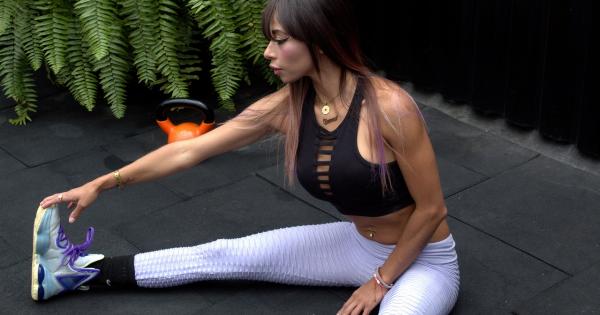Flexibility, as defined by the American Council on Exercise (ACE), refers to the ability of a joint or series of joints to move through a full range of motion. This ability is crucial for maintaining long-term health and wellness.
Lack of flexibility can lead to a host of physical problems and is often an indication of poor overall health. In this article, we will explore the importance of flexibility for optimal health, the benefits of being flexible, and what steps you can take to improve your own flexibility.
What is Flexibility?
Flexibility is the ability of joints and muscles to move through their full range of motion. This allows you to perform daily tasks, exercise and play sports with ease.
Being flexible also helps reduce your risk of injury by improving joint mobility and muscle elasticity.
There are several factors that contribute to flexibility, including genetics, age, sex and physical activity.
While some people are naturally more flexible than others, this doesn’t mean you can’t improve your own flexibility through regular stretching and exercise.
The Importance of Flexibility for Long-Term Health and Wellness
Being flexible is important for our long-term health and wellness. Lack of flexibility can lead to a host of physical problems, such as limited mobility, muscle weakness and poor posture.
Poor flexibility is also often an indication of poor overall health, which can increase your risk of disease and injury.
For example, tight hips can contribute to lower back pain, knee pain, and even ankle injuries. If your upper back and shoulder muscles are tight, this can cause poor posture and neck pain.
Poor flexibility can also affect your ability to perform daily tasks, such as reaching for items on high shelves or getting in and out of a car.
On the other hand, maintaining good flexibility can have numerous benefits, including:.
Benefits of Being Flexible
1. Improved Posture
Good flexibility helps to maintain proper alignment of your bones and joints, which leads to better posture. Poor posture can cause muscle imbalances, which can lead to pain and injury over time.
By improving your flexibility, you can improve your posture and reduce your risk of pain and injury.
2. Reduced Risk of Injury
Being flexible can improve joint mobility and muscle elasticity. This means you are less likely to suffer from muscle strains, sprains, and other types of injuries.
Improved flexibility can also help with injury recovery by increasing circulation and preventing the formation of scar tissue around the injured area.
3. Improved Athletic Performance
Athletes who are flexible have an advantage over those who are not. Being flexible can help improve range of motion, which can lead to better athletic performance.
For example, a flexible runner can take longer strides and cover more distance with each step, while a flexible basketball player can jump higher and change direction more quickly.
4. Improved Range of Motion
Good flexibility allows you to move your joints through their full range of motion. This makes it easier to perform daily tasks and engage in physical activity. Improved range of motion can also help relieve pain and stiffness in your joints.
5. Improved Circulation
Stretching and flexibility exercises can help improve circulation by increasing blood flow to your muscles and joints. This can help reduce the risk of cardiovascular disease and improve overall health and wellness.
6. Reduced Stress and Tension
Flexibility exercises can help reduce stress and tension in your muscles, which can lead to improved relaxation and mental focus. This can help improve your overall sense of well-being and reduce the risk of stress-related illnesses and conditions.
How to Improve Flexibility
There are several ways to improve flexibility, including:.
1. Stretching
Stretching is one of the most effective ways to improve flexibility. There are several types of stretching that you can do, including static stretching, dynamic stretching, and PNF stretching.
Each type of stretching involves different techniques and may be better suited for different goals and needs.
2. Yoga
Yoga is a great way to improve flexibility, strength, and balance. It involves a series of poses and movements that help to improve joint mobility and muscle elasticity. Yoga is also great for reducing stress and improving mental focus and awareness.
3. Pilates
Pilates is a type of exercise that focuses on improving core strength, flexibility, and balance. It involves a series of exercises that help to improve joint mobility and muscle elasticity. Pilates is also great for improving posture and reducing stress.
4. Tai Chi
Tai chi is a type of martial art that involves slow, flowing movements that help improve balance, flexibility, and relaxation. It is a low-impact form of exercise that can be done by people of all ages and athletic abilities.
5. Foam Rolling
Foam rolling is a form of self-massage that helps to release tension and tightness in your muscles. It can be done using a foam roller or other types of massage tools, such as lacrosse balls or massage sticks.
Foam rolling can help improve flexibility, reduce muscle soreness, and improve circulation.
Conclusion
Flexibility is a crucial component of long-term health and wellness. Being flexible can help improve posture, reduce the risk of injury, improve athletic performance, improve range of motion, improve circulation, and reduce stress and tension.
There are several ways to improve flexibility, including stretching, yoga, Pilates, Tai Chi, and foam rolling. By incorporating these methods into your daily routine, you can improve your flexibility and enhance your overall health and well-being.





























